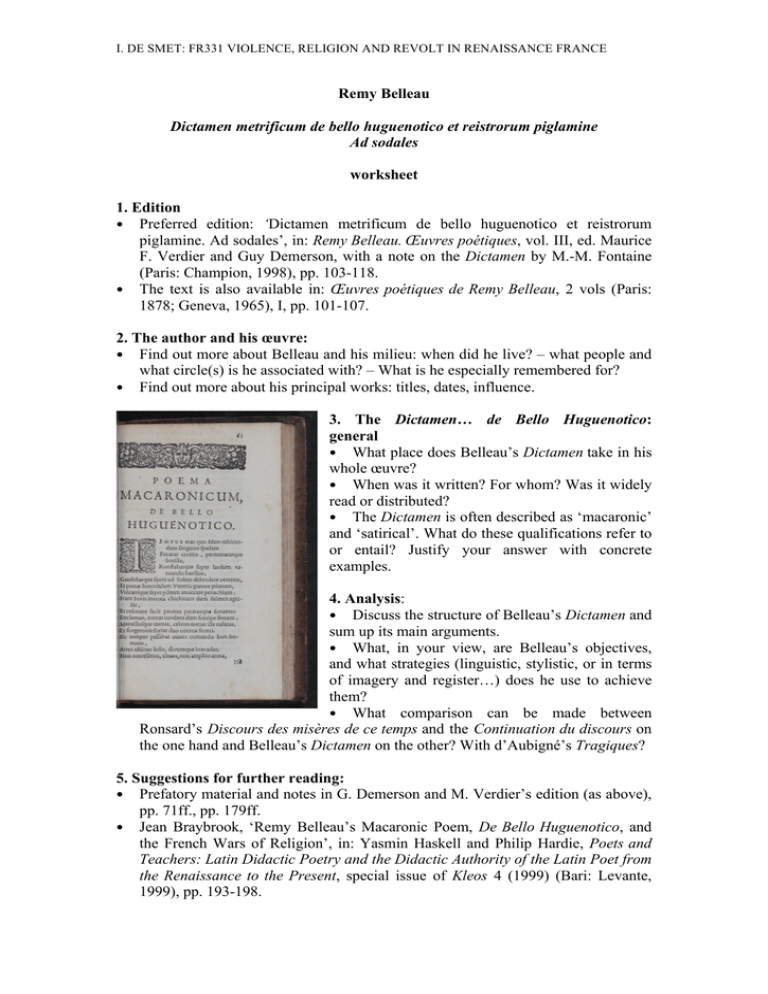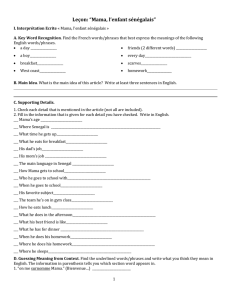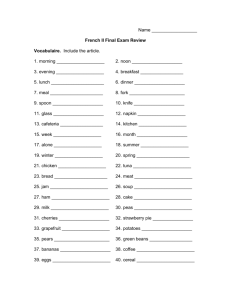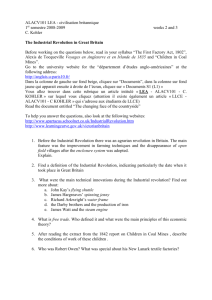Remy Belleau worksheet 1. Edition
advertisement

I. DE SMET: FR331 VIOLENCE, RELIGION AND REVOLT IN RENAISSANCE FRANCE Remy Belleau Dictamen metrificum de bello huguenotico et reistrorum piglamine Ad sodales worksheet 1. Edition ! Preferred edition: ‘Dictamen metrificum de bello huguenotico et reistrorum piglamine. Ad sodales’, in: Remy Belleau. Œuvres poétiques, vol. III, ed. Maurice F. Verdier and Guy Demerson, with a note on the Dictamen by M.-M. Fontaine (Paris: Champion, 1998), pp. 103-118. ! The text is also available in: Œuvres poétiques de Remy Belleau, 2 vols (Paris: 1878; Geneva, 1965), I, pp. 101-107. 2. The author and his œuvre: ! Find out more about Belleau and his milieu: when did he live? – what people and what circle(s) is he associated with? – What is he especially remembered for? ! Find out more about his principal works: titles, dates, influence. 3. The Dictamen… de Bello Huguenotico: general ! What place does Belleau’s Dictamen take in his whole œuvre? ! When was it written? For whom? Was it widely read or distributed? ! The Dictamen is often described as ‘macaronic’ and ‘satirical’. What do these qualifications refer to or entail? Justify your answer with concrete examples. 4. Analysis: ! Discuss the structure of Belleau’s Dictamen and sum up its main arguments. ! What, in your view, are Belleau’s objectives, and what strategies (linguistic, stylistic, or in terms of imagery and register…) does he use to achieve them? ! What comparison can be made between Ronsard’s Discours des misères de ce temps and the Continuation du discours on the one hand and Belleau’s Dictamen on the other? With d’Aubigné’s Tragiques? 5. Suggestions for further reading: ! Prefatory material and notes in G. Demerson and M. Verdier’s edition (as above), pp. 71ff., pp. 179ff. ! Jean Braybrook, ‘Remy Belleau’s Macaronic Poem, De Bello Huguenotico, and the French Wars of Religion’, in: Yasmin Haskell and Philip Hardie, Poets and Teachers: Latin Didactic Poetry and the Didactic Authority of the Latin Poet from the Renaissance to the Present, special issue of Kleos 4 (1999) (Bari: Levante, 1999), pp. 193-198. I. DE SMET: FR331 VIOLENCE, RELIGION AND REVOLT IN RENAISSANCE FRANCE ! ! ! ! F. Deloffre, ‘Une déploration macaronique’, in Il tema della fortuna (Mélanges Giudici) (Firenze, 1990), pp. 223-238. Guy Demerson, ‘Paradigmes épiques et collision des genres. À propos du De bello huguenotico de Belleau’, in: Avatars de l’épique, numéro spécial de la Revue de littérature comparée, 70 (1996), pp. 445-456. Jean Braybrook, Remy Belleau et l’art de guérir (London: Versita / De Gruyter, 2013), ch. 6: La poésie macaronique: le Dictamen metrificum (p. 97-112) – Open access via http://www.degruyter.com/viewbooktoc/product/246972 Carole Primot, ‘Déplacements et enjeux de l’écriture macaronique chez Rémi Belleau’, in Die neulateinische Dichtung in Frankreich zur Zeit der Pléiade / La Poésie néo-latine en France au temps de la Pléiade, ed. by Marie-France Guipponi-Gineste, Wolfgan Kofler et al., NeoLatina 19 (Tübingen: Narr Verlag, 2012), 197-216. [on order for the library] SEMINAR PRESENTATION TOPICS Names 1. What is macaronic poetry? How does B fit into this tradition? 2. Context: Belleau and the Pléiade 3. Belleau and the Guise: what is the significance of patronage for our reading of Belleau’s work? 4. Humor and satire as a remedy to violence in Belleau’s Dictamen?


